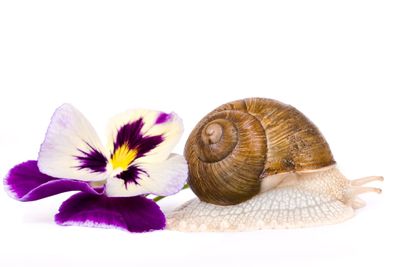Managing Pansies and Pests
Of all the pansy plant pests, aphids are probably the most prevalent. There are several species of aphid that feed on pansies, including crescent-marked lily aphid, green peach aphid, melon aphid, pea aphid, and violet aphid. They tend to appear on pansies in the spring, attacking the ends of new growth. It can be hard to treat aphids chemically because they reproduce so quickly and effectively. If you miss even a single one, the population will be able to bounce back. Because of this, the best way to manage pansies is to introduce natural predators, such as ladybugs, parasitic wasps, and lacewings. Planting Queen Anne’s lace will help attract these predators. Another of the common pests on pansies is the two-spotted spider mite. Especially during hot, dry weather, you may notice tiny pinpricks on your pansies’ leaves, which eventually spread to light brown spots. If an infestation gets bad, you may notice a fine webbing, and leaves will begin to die. Spider mites are treatable with insecticidal soap or other pesticides.
Other Pansy Pest Problems
Snails and slugs can cause serious damage to pansies during the night, especially during damp weather. In the morning, you will notice irregular holes chewed through leaves and petals, as well as slimy trails left behind. You can discourage slugs and snails by removing litter from around the plant. You can also set out slug and snail traps. Western flower thrips cause scarring on flower petals and may cause flower buds to be deformed when they open. Thrips can be controlled with insecticidal spray and the introduction of predators, like the minute pirate bug and green lacewing. Several caterpillars, including cutworm, greenhouse leaftier, omnivorous leaftier, omnivorous looper, and coronis fritillary, are known pansy plant pests. They are best managed by hand picking.
